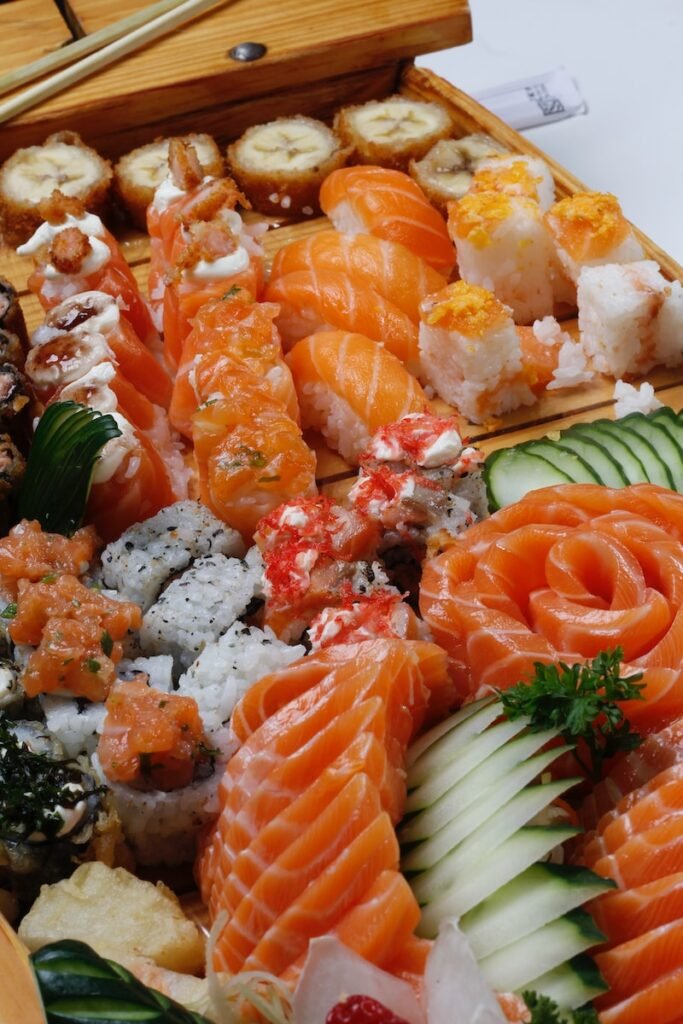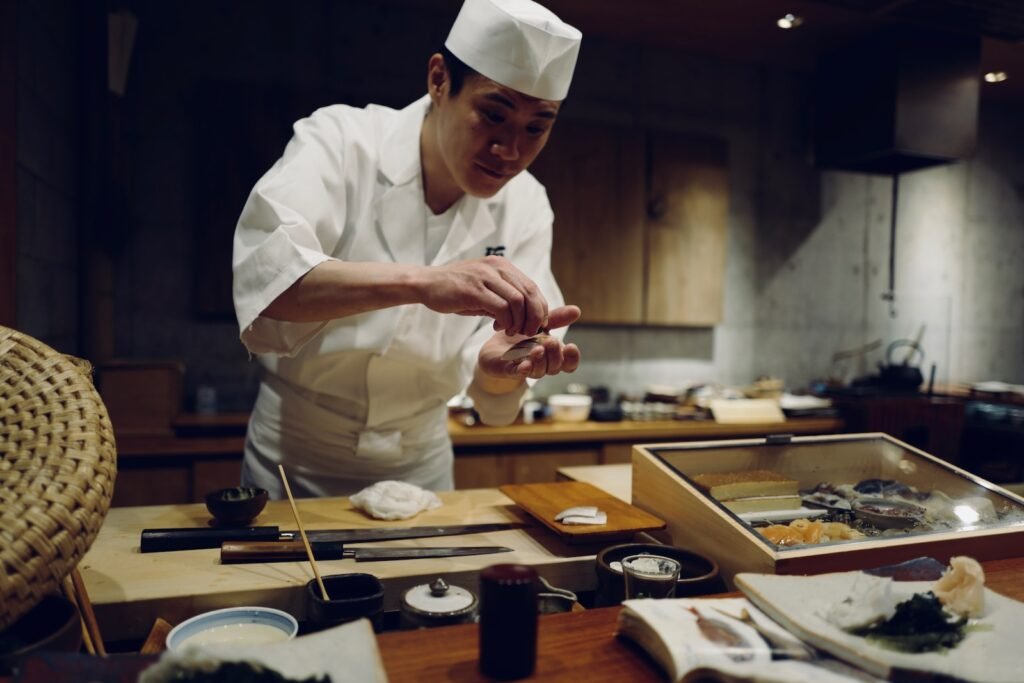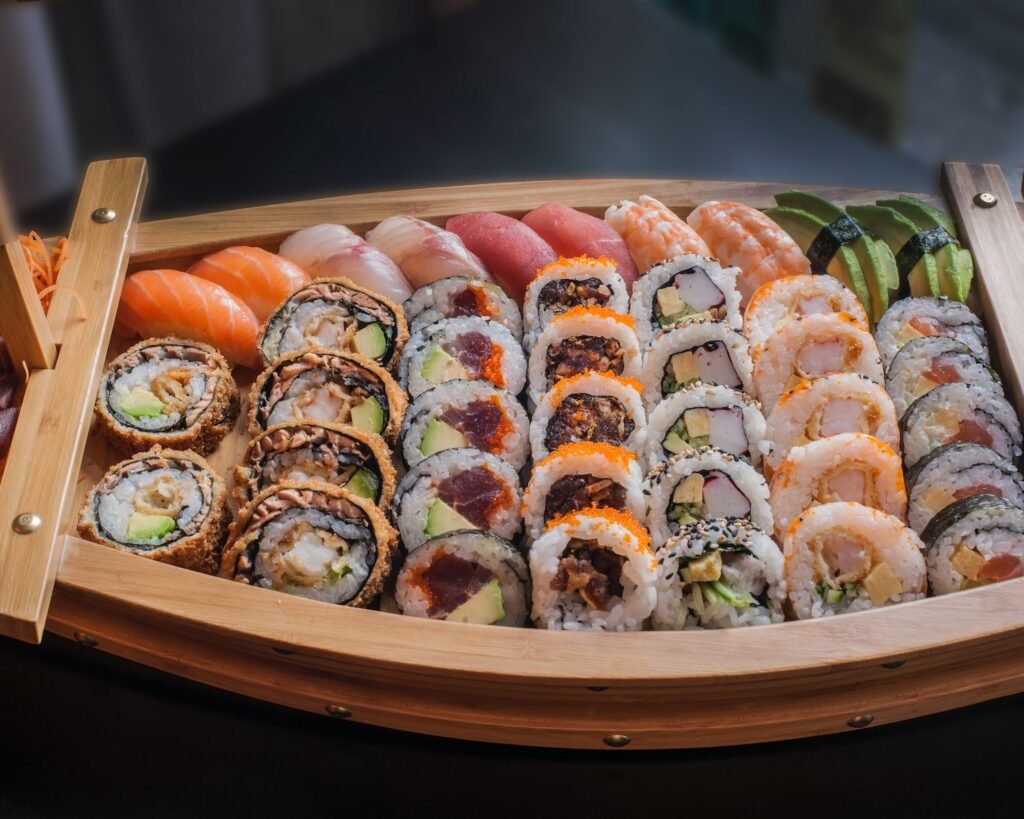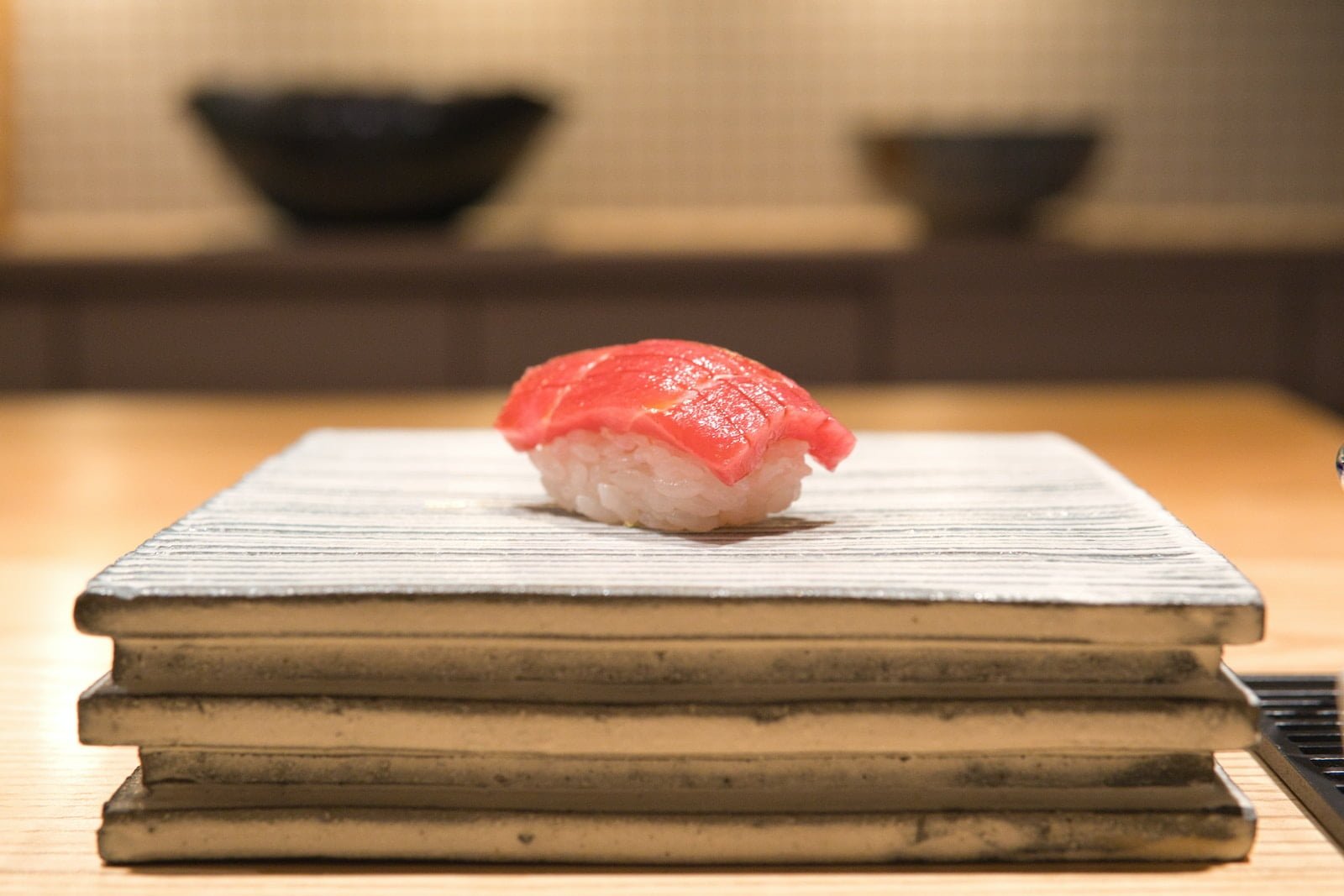Introduction to the Art of Sushi
Sushi, the quintessential Japanese cuisine, exceeds mere food—an expression of artistic craftsmanship. With origins shrouded in history, sushi has ascended from a preserved sustenance to a creative culinary delight. The artisanal quality of sushi comes from the meticulous combination of flavor, presentation, and technique, which are revered as much as the taste itself.
Key Takeaways
- Sushi is regarded as an art form
- Involves craftsmanship and technique
- Emphasis on flavor and presentation
Historical Evolution of Sushi
Sushi’s history is a tapestry of cultural influence and innovation. This dish that today signifies gourmet indulgence had rudimentary beginnings as fermented fish and rice in Southeast Asia. Through centuries, methods evolved, arriving at the variety seen in contemporary Japanese cuisine. The journey from narezushi to edomae sushi underscores a transformation central to appreciating sushi’s artistry.
Key Insights
- Origins in fermented fish and rice
- Adaptation and evolution over centuries
- Edomae sushi: the pinnacle of historical evolution

Essential Elements of Sushi Making
Crafting sushi involves more than just rolling rice and fish. Every sushi master knows the significance of quality ingredients—the selection of sushi-grade fish, perfectly cooked rice, and fresh accompaniments form the foundation. But beyond this, it’s the chef’s expertise in balancing these elements that distinguishes outstanding sushi.
Essentials of Sushi
- Selection of sushi-grade fish
- Perfectly cooked rice
- Balance and harmony of ingredients
Sushi and the Japanese Culinary Tradition
Sushi is deeply ingrained in Japan’s gastronomic culture, where the pursuit of culinary excellence is almost spiritual. Chefs dedicate years to honing their skills, aspiring to the revered title of itamae (sushi chef). Their dedication reflects the cultural significance of sushi in Japanese society, where it is more than a dish—it’s a cultural embodiment.
Cultural Insights
- Sushi as a spiritual pursuit
- Long apprenticeship to become itamae
- Sushi’s cultural significance in Japan
The Role of the Sushi Chef in Crafting Sushi
The sushi chef is the linchpin of the sushi experience, an artist who wields knives with the precision of a calligrapher. Mastery requires understanding the subtleties of fish, the art of slicing, and the elegance of arrangement. It is their hand that sculpts the sushi into a gastronomic masterpiece.
Chef’s Influence
- Precision and mastery akin to artistry
- Deep understanding of fish and technique
- Sculpting of gastronomic masterpieces

Techniques and Tools of the Trade
Impeccable techniques are pivotal in creating sushi that is both beautiful to behold and delightful to taste. The tools of sushi—from bamboo mats to sharp, specialized knives—are extensions of the chef’s hands. Mastery of these tools is essential for performing tasks like the delicate slicing of sashimi or the rolling of maki with precision.
Technical Aspects
- Importance of impeccable techniques
- Specialty tools like bamboo mats and knives
- Seamless execution of slicing and rolling
Understanding Sushi Varieties: Nigiri, Maki, and More
Sushi comes in a symphony of styles—from nigiri, with its hand-pressed rice topped with neta (slices of fish), to the cylindrical maki rolls, and the inventive fusion rolls that have emerged from sushi’s geographical journey. Understanding these varieties provides insight into the diverse expressions of sushi’s art form.
Sushi Varieties
- Nigiri: hand-pressed rice with fish topping
- Maki: cylindrical rolls with seaweed and fillings
- Fusion rolls: inventive takes on traditional sushi

The Significance of Presentation in Sushi
A sushi plate is a canvas where color, shape, and texture harmonize to create a feast for the eyes. The aesthetics of sushi presentation is as crucial as its taste, with every component strategically placed for optimal visual impact. The chef’s expert presentation elevates the dining experience to an art exhibition.
Presentation Elements
- Color, shape, and texture harmony
- Strategic placement for visual impact
- Elevating dining to visual art
Are you a food aficionado or a culinary explorer? Dive into our blog for thought-provoking articles on the art of cuisine and more. Read More on Our Blog
Sushi Etiquette for Diners
For diners, appreciating sushi involves etiquette that enhances the experience. From using chopsticks correctly to understanding the order of consumption, sushi etiquette is part of the tradition. Diners who embrace these practices not only show respect for the chef’s work but also enrich their culinary adventure.
Sushi Etiquette
- Proper chopstick use
- Understanding consumption order
- Respecting the chef’s work
Conclusion: The Global Influence of Sushi Artistry
The global appeal of sushi is undeniable. It has transcended borders, taking its place in the highest echelons of culinary arts. As it continues to evolve and inspire, the art of sushi represents a harmonious blend of tradition and innovation, a testament to its historical roots and the chefs who skillfully keep its legacy alive.
Global Influence
- Transcended cultural boundaries
- A blend of tradition and innovation
- Chefs upholding and evolving sushi’s legacy
This article thoroughly explores the art of sushi, providing a lens through which we can appreciate this culinary wonder. From its historic origins to the intricate skills of the sushi chef, sushi is indeed an art form that delights and inspires.







